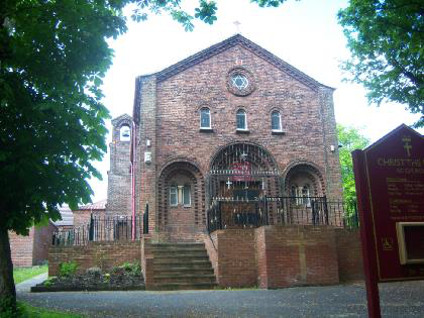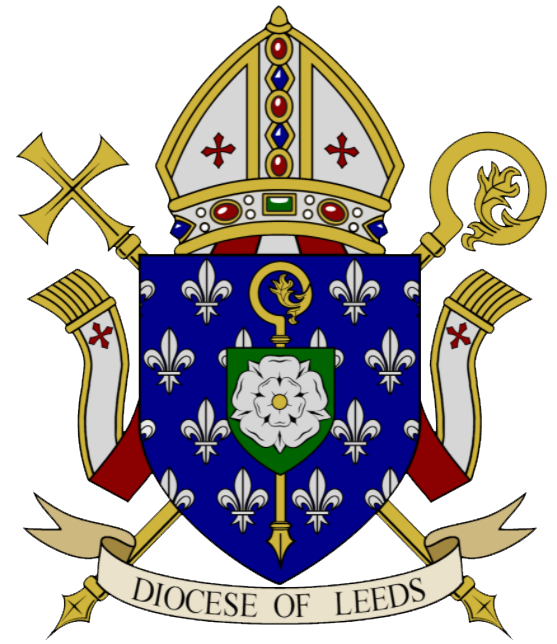
A modest brick church in simplified Romanesque style, the first of several churches built after the First World War in the suburbs of Leeds with support from the New Mission Fund. The church, parish room and presbytery form an attractive group at the heart of a small conservation area.
The church was built in 1928 on the initiative of Mgr William Hawkswell, secretary to Bishops Gordon and Cowgill, to serve the new housing estates at Sandford, Wyther, Westfield and Greenthorpe, to the west of the city centre. The church was built from designs by the Bradford architects Empsall, Clarkson and Clarke, with financial support from the New Mission Fund. It was the first of several post-First World War churches to be built in the suburbs of Leeds, and was opened by Bishop Cowgill. In 1931 a parish room was built, presumably also from designs by Empsall, Clarkson and Clarke. In 1936 a school was opened, served by Sisters from a convent newly- established in the parish, and the presbytery was also built about this time.
Description
The ‘west’ front actually faces east, but this description follows conventional liturgical orientation.
Small church in modern Romanesque style, purple-red brick with pantile roofs (plain tiles to presbytery and parish room). Gabled west front with three round arched openings with simple neo-Romanesque detail, paired hardwood doors to larger central opening, paired window openings separated by short Romanesque columns within smaller side openings. The west front is framed by pilaster/piers at the corners. Three round-arched openings over the entrance, and in the gable a circular window incorporating a Star of David. Dentilled eaves and a cross surmounting the gable. The flank elevations are more plainly treated, with pilasters marking the bays and two tiers of round arched openings (some paired, some single). Towards the east end, projecting transept/sacristy on the south side, with a gabled bellcote at the junction with the nave, housing one bell, and a side entrance at the base. Corresponding transept/side chapel on the north side. The east wall is plain, framed by pilasters with a small circular window in the gable.
The main entrance leads into a narthex area, divided from the church by three round brick arches, now with solid doors to the central opening and the side ones glazed in. The main space of the nave has exposed brick walls up to the height of the springing of the arches of the lower windows, and plastered walls above this point. Plain, opaque glass to the windows. A suspended ceiling has been introduced, though which the pendants of the original roof structure obtrude. There is a large round-headed sanctuary arch, with smaller arches to left and right to side chapels. Short, square-ended sanctuary with good oak furnishings (panelling, reredos and altar). Complementing these, a fine wooden octagonal font with columnar supports in the south transept area. Modern bench seating.
Parish of Christ the King and Holy Family
The Presbytery
Kings Approach
Leeds LS13 2DX

2024 © Designed by Dales Creative Web Design